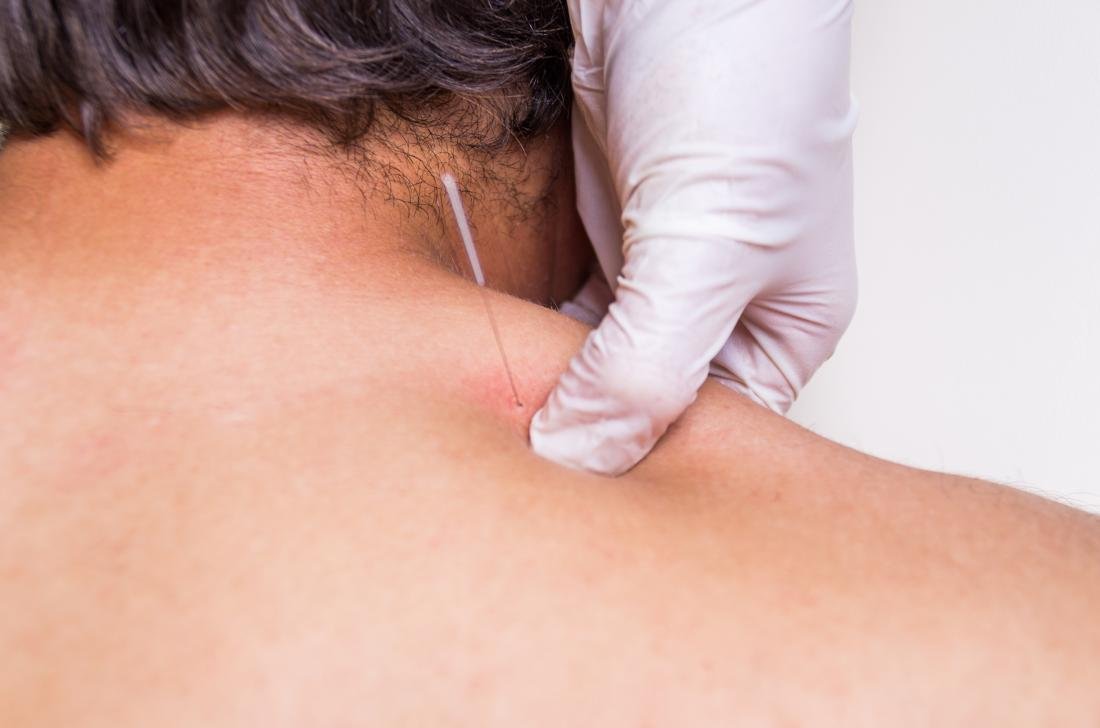
Dry Needling
Why try Dry needling at Mycare physiotherapy?
Dry needling is an integral part of the physiotherapy service we provide at MyCare Physiotherapy. Each practitioner has had extensive training in order to utilize this method of treatment effectively and efficiently. Each practitioner will determine if this is a suitable treatment for each patient. Consent will always be obtained prior to commencing. If this treatment is not applicable, alternative measures can be used to reach a positive outcome.
What is dry needling?
Dry needling is a technique which involves inserting a thin needle into the skin and underlying tissues, mainly muscles and other connective tissues such as tendon and ligamentous structures. There is no fluid or substance involved with the needle, hence why it is called ‘dry’ needling. This is not considered an injection. The primary objective of dry needling is to release muscle tension which in turn stimulates the healing process.
One of our therapists will locate the trigger point in a particular muscle. This is an imperative step where palpation skills and experience come into play in localising specific areas of muscle tension. Often when the needle has been inserted into a trigger point the muscle may give a ‘twitch’ response. This is an involuntary contraction of the muscle. This response may not always be achieved depending on the severity and type of muscle. The twitch response or any reduction in muscle tension will assist in relaxing the muscle, reducing pain and restoring function.
Dry needling vs acupuncture
The needles used in both dry needling and acupuncture are similar however the principles and clinical reasoning behind the treatments are vastly different. Acupuncture focuses on traditional Chinese medicine, targeting a broad range of Chinese acupuncture points to improve the body’s overall balance and ‘Chi’. Dry needling is used to target musculoskeletal structures, predominantly tight bands of muscle tissue that are the reasons for pain and limiting function. Our therapists are able to utilise both these techniques in order to achieve the best outcome for each patient.
Dry needling vs other treatments
Whilst dry needling is one of the most effective treatments to reduce muscle tension, it is dependent on each individuals condition to determine whether it can be used or not. Most commonly dry needling is used in conjunction with other therapies such as manual therapy and exercise as part of a comprehensive treatment approach.
What conditions can dry needling be used for?
Dry needling can be used for most musculoskeletal conditions. Some examples include: headaches/migraines, inflammatory conditions such as tennis/golfers elbow and neuromuscular conditions such as carpal tunnel syndrome or sciatica. It is important that a qualified professional who has received the appropriate training assess each individual condition on a case by case scenario. Effectiveness will depend on each patient so it is important to consult with your treating therapist to determine if dry needling is beneficial to your particular injury.
Are there different techniques of dry needling?
Travell & Simons Technique
Localise the trigger point by gentle palpation of the taut band
Palpate the region with specificity at point of highest tenderness
The muscle is ‘snapped’ with palpating, a pincer grip may be used to localise the trigger point. A LTR (Local twitch response) may be produced.
It is recommended to enter at with the insertion at a 30 degree angle
The needle may only be needed to put in once if an affect LTR is achieved. If a multitude of trigger points are palpated within the band if tight tissue, than the area may ‘plucked’ with a variable amount of insertions into the trigger point. This is done by inserting and taking the needle out of the tissue with it redirected into another region of the site of tension.
Hong’s Technique
Hong places a larger emphasis on the Local twitch response and the needle insertion speed
This technique involves ‘pecking’ or ‘plucking’ technique with the needle being inserted and withdraw at a increased velocity in order to produce a number of LTR’s (5-30). The needle is not fully withdrawn with each insertion, it is only taken back to the subcutaneous layer. Plucking can be completed up to 20-60 times
After the needling, compression is placed on the targeted area for 2 minutes
This type of dry needling can significantly help with pain, threshold of discomfort on the trigger point & range of motion. Soreness can occur within 5 hours of the needling and can last up to 5 days. This is variable with each patient and is different for each patient and trigger point.
Baldry’s Technique
Superficial dry needling
Aims at targeting trigger points
Insertion is 5-10mm into the upper layer of dermis above the trigger point
The needle is left stationary for 30 seconds
The needle is rotated and the patient is asked if there is any residual sensation, if so the needle is left for another 30 seconds. The process is repeated
Following the removal of the needle, pressure is applied to the area of the trigger point. The patient is to give verbal indication on if the ‘jump sign’ and high reactivity/tenderness has been removed. If still remaining the needle is then inserted again superficially at the same depth for 2-3 minutes. If the patient is notably a non-responder the needle can be used to ‘stimulate’ a response within this period.
Does dry needling hurt?
The answer is yes and no. In a lot of cases the patient can barely feel it. This is dependent person to person. With the goal of obtaining long term pain relief, the needling action may cause pain and tenderness. This is exacerbated with the ‘plucking’ technique and how aggressive the needling is performed. This is often dependent on the severity of muscle tension. A residual ache may remain for up to three days. Once this sensation is gone, the benefits of the needling are often felt.
